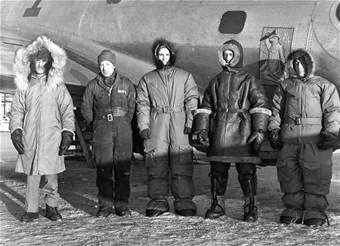Human Variation &
Race Blog
Humans and the Cold
Humans are naturally fortified with several methods to
maintain a balanced state; this is homeostasis.
The purpose of this is to sustain a healthy core level so we may function productively.
Climate temperatures like cold weather disturbs the stability homeostasis provides
in the body. Different procedures are activated and controlled to counter-act
environmental effects throughout the body before complications become too
severe. Survival is key. A condition that can cause catastrophe damage to
homeostasis is untreated hypothermia, this lowers core temperature until limbs
have restricted mobility, frostbite, organ failure, gangrene and eventually loss
of life occurs.
Short term adaptation for humans
to maintain homeostasis against the cold is simply to shiver. When outside force effect the body like
temperature drops the body has a number of built in methods (as it were) to
keep the body maintain balance. Along with goose bumps another involuntary
reflex is shivering; skeletal muscles spasm in an effort to heat the body by warming
the muscles and creating energy. While the body shivers the hairs erected by
the arrector pili muscles in the body gather warm air around the body and actively
contains the warmth like insulation in order for us to return to a healthy internal
temperature 98.6 degrees (hypothalamus maintains body temp along with other aspects of the body).
Facultative adaptation humans have developed is
vasoconstriction. This is an additional method for maintaining homeostasis, blood
flow is slowed in the body by muscles within the blood vessels that narrow and
allow blood to pass to major vessels (arteries) temporarily reducing the flow
to lesser vessels (smaller one like capillaries) this decreases the loss of
body heat. Without the constant flow of blood the skin surface pales and drops
in temperature activating the short term adaptations to retain body heat.
Developmental adaptation that aids in humans against cold
weather is our body built. Living further
from warm climates bodies tend to be better suited for colder weather. While being tall and slender is common in warm
climates (they have less adipose tissue that retains heat), short or thick people
are better suited so they can adapt to climates that are colder without too
much difficulty. The natural physiques of colder climate populations have more
body heat due to their body mass or lower stature.
Cultural adaptation- Well one example of many to choose from
that humans use is clothing style. Materials for these garments can either be
synthetic or natural fibers and are very effective for extreme climates. Layers
in clothing of different fibers and materials that have properties like wicking is an effect that takes perspiration away from the body, insulating properties
keeps warmth in, wind and water resistant help maintain a balanced core
temperature. Wool, cotton, fur, skin, polypropylene, fleece and nylon are examples
of materials that can be used in cold weather.
The study of environmental clines is important because with
a wide variety of studies the ending results will provide information to better
to understand and aid populations in diverse surroundings. Benefits we gain
from the results of studying human variation in environment clines are the
various adaptive measures in the human body (naturally contains or develops).
This information aids us in excavating areas for scientific measures (global warming,
etc), humanitarian efforts to native populations, and survival technology (communication
tech, habitat, etc.) Without these results individuals with be furnished
without proper equipment leading to severe consequences.
Variations of adaptation using race as a case study would
provide some valet information however I don’t know how far you can really take
a study with this limitation. Races with darker pigmentation are better
equipped to survive in hot climates (tropical) because the melanin in their
skin naturally protects them rather than paler skin from the sun that can cause
damage however they can move away to another type area and with time the body
can adapt but not as effectively as they would be in their natural habitat. But
using races as the base line of the study can only go so far. The studies of
environmental influences are more sufficient to understand the variation of
humans rather than race because nature doesn't discriminate.
Link below demonstrates our natural reactions to temperature fluctuation (COLD/HOT) ENJOY
http://www.abpischools.org.uk/res/coResourceImport/modules/homeostasis_sugar/fullscreenflash6-1.cfm
Link below demonstrates our natural reactions to temperature fluctuation (COLD/HOT) ENJOY
http://www.abpischools.org.uk/res/coResourceImport/modules/homeostasis_sugar/fullscreenflash6-1.cfm



